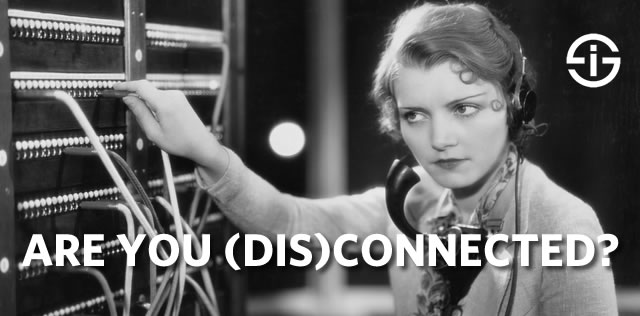The term ‘connected consumer’ pops up on virtually every blog that covers digital marketing. As usual, the danger is that in the end everyone talks about something different when using the term. Furthermore, it’s at least as important to understand the connected customer experience and buying experience if you want to serve the connected consumer well. Let’s take a look.
Everyone understands what the word ‘connected’ means so let’s skip that part. While I’m writing this, I’m looking at a book in my ‘library’, called ‘Connected Marketing: The Viral, Buzz and Word of Mouth Revolution’ published in 2005 and written by Justin Kirby and Paul Marsden.

Unfortunately, for the authors, we don’t often talk about ‘connected marketing’ but about ‘social media marketing’, word of mouth marketing, viral etc. (in the context of that book at least) and now we seem to talk more about integrated marketing again (be it in a somewhat different meaning than originally). Great, as long as it works.
The connected consumer and connected devices
It’s obvious that people are more connected via digital channels and hubs of common interest nowadays.
It’s also clear that we use more connected devices. In a 2010 overview of the usage of connected devices, Nielsen , used the term ‘connected consumer’ in that context (SlideShare below): connected devices – and there still is quite a bit that will be connected in the near and far future from the device and (Internet of) things perspective.
So, is there a…connection between the connected consumer and the increasing use of connected devices (and platforms)? Yes, most certainly. The flexibility dimension of digital transformation has a lot to do with it.
Wait a minute: isn’t everyone a connected consumer? Yes, of course. Even my dad, who has no Internet, is a connected consumer: he gets influenced and influences other consumers as well. He’s a consumer and he’s connected.
But that’s not how we use the term ‘connected consumer’ today. It’s also less about connected devices and more about a specific group of consumers. Sometimes we even talk about the ‘hyper-connected’ consumers. They are consumers that are…more connected than the connected ones. Still follow? OK, time for another slideshare.
Personal networks of trust and Generation C
In 2009, Razorfish, always good for excellent reports, released ‘The Razorfish Consumer Experience Report’. In the summary below you will notice Razorfish speaks about the connected consumers as people who embrace social media and actively build their own trusted personal networks, among others.
It’s clear there is a new breed of consumers who are very connected in that sense. They know what they want, they are – more than others – in control over their buying journey and the ways they interact with businesses (I know, you hear that all the time now but trust me, it took ages to get the customer back where he belongs – and in fact it’s still far from done). These “consumers” (you and me), want great customer experiences, demand you to be relevant, find and share information in new ways and show the behavior of Generation Y: connected and online.
In “The End of Business As Usual”, Brian Solis called them Generation C. Multitasking and multiscreen, always on, engaged in a cross-platform way, mobile, predominantly female, connected, different and empowered. That’s Generation C.
Do you have to focus all your marketing efforts on Generation C? Of course not. You still have your ‘less connected’ customers to service well too.
From disconnected to connected and reconnected – trust and relevance
However, the ‘connected consumer’ is there and by understanding what he wants and acting upon it, new opportunities arise. In order to turn them into action, you need to understand how Generation C connects and know the connected consumer decides differently.
And obviously, you need to really understand them, listen and act in relevant ways. But, then again, that goes for all consumers and how often aren’t we still disconnected from them?
You still have your ‘less connected’ customers to service well too. And all customers are connected in a multi-channel or, better channel-agnostic, way nowadays. Look at those touchpoints and you’ll see why. You might have lost touch with some of them and need to reconnect.
So, time to connect, reconnect and…gain the trust back you might have lost. Be relevant. In fact, be more than relevant. The customer has a voice. And growing expectations. Regarding a connected and integrated/consistent overall customer experience, to start with.
Top image: Shutterstock – Image ID: 94006867 – All other images are the property of their respective mentioned owners.

